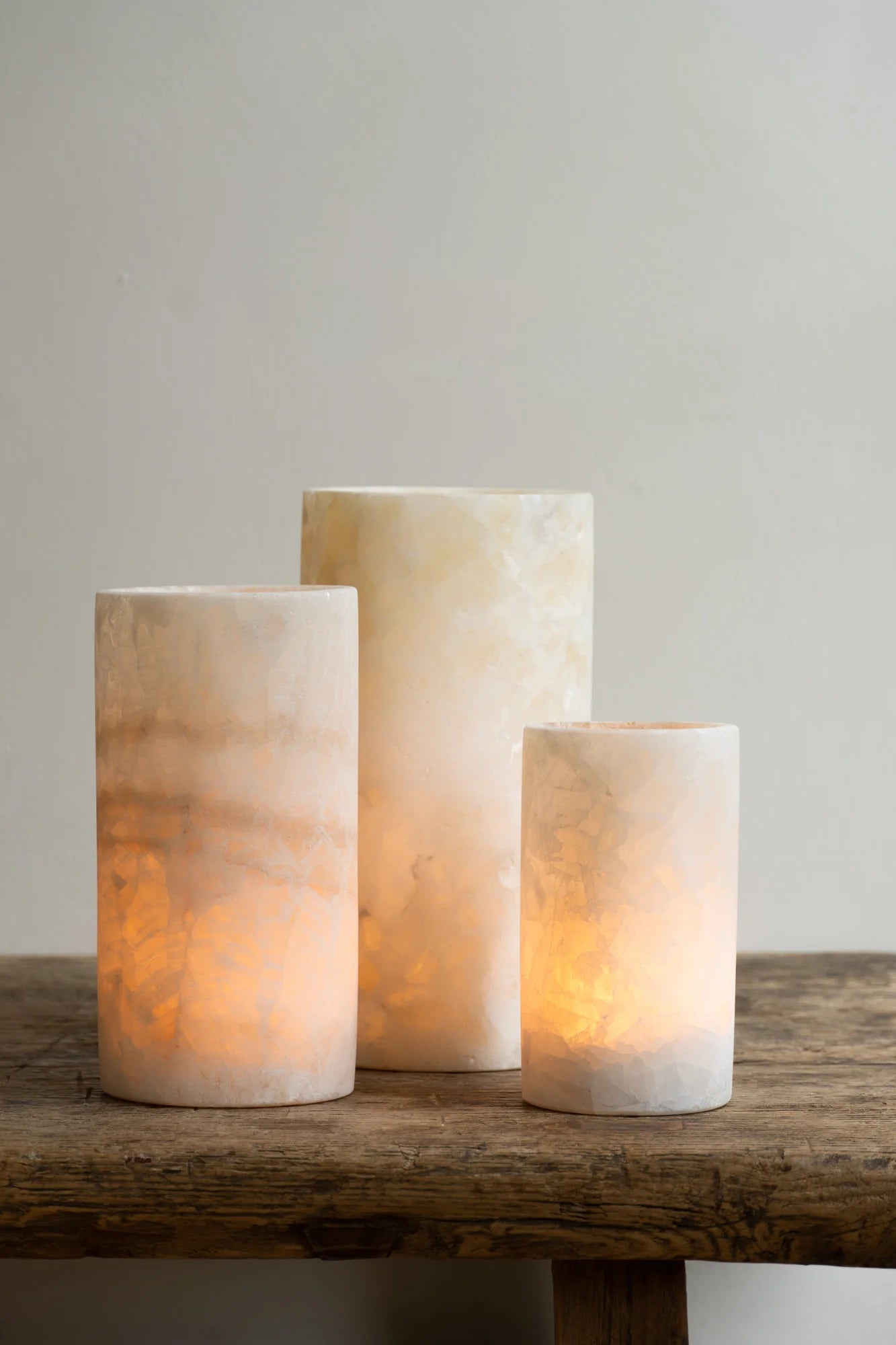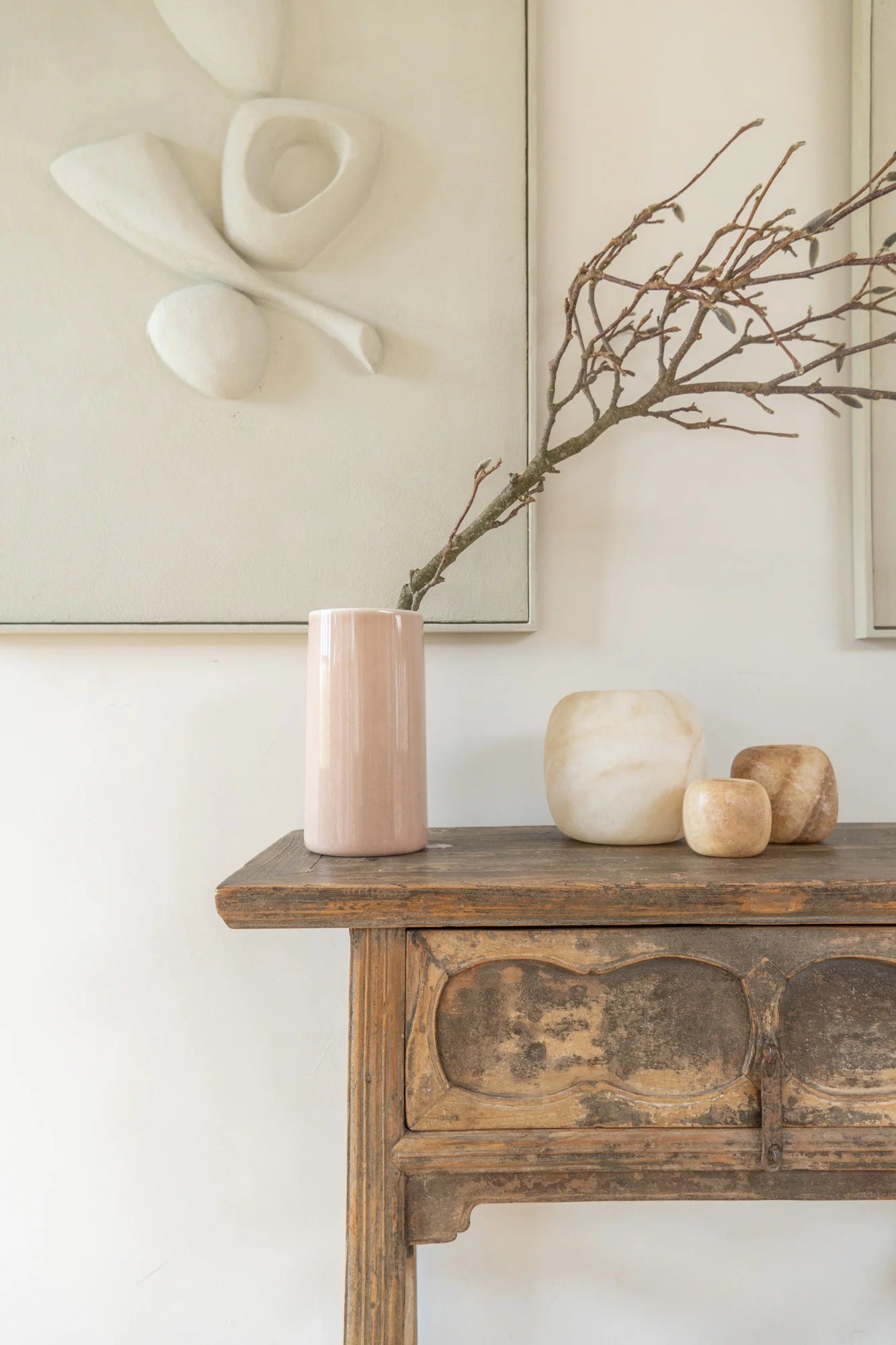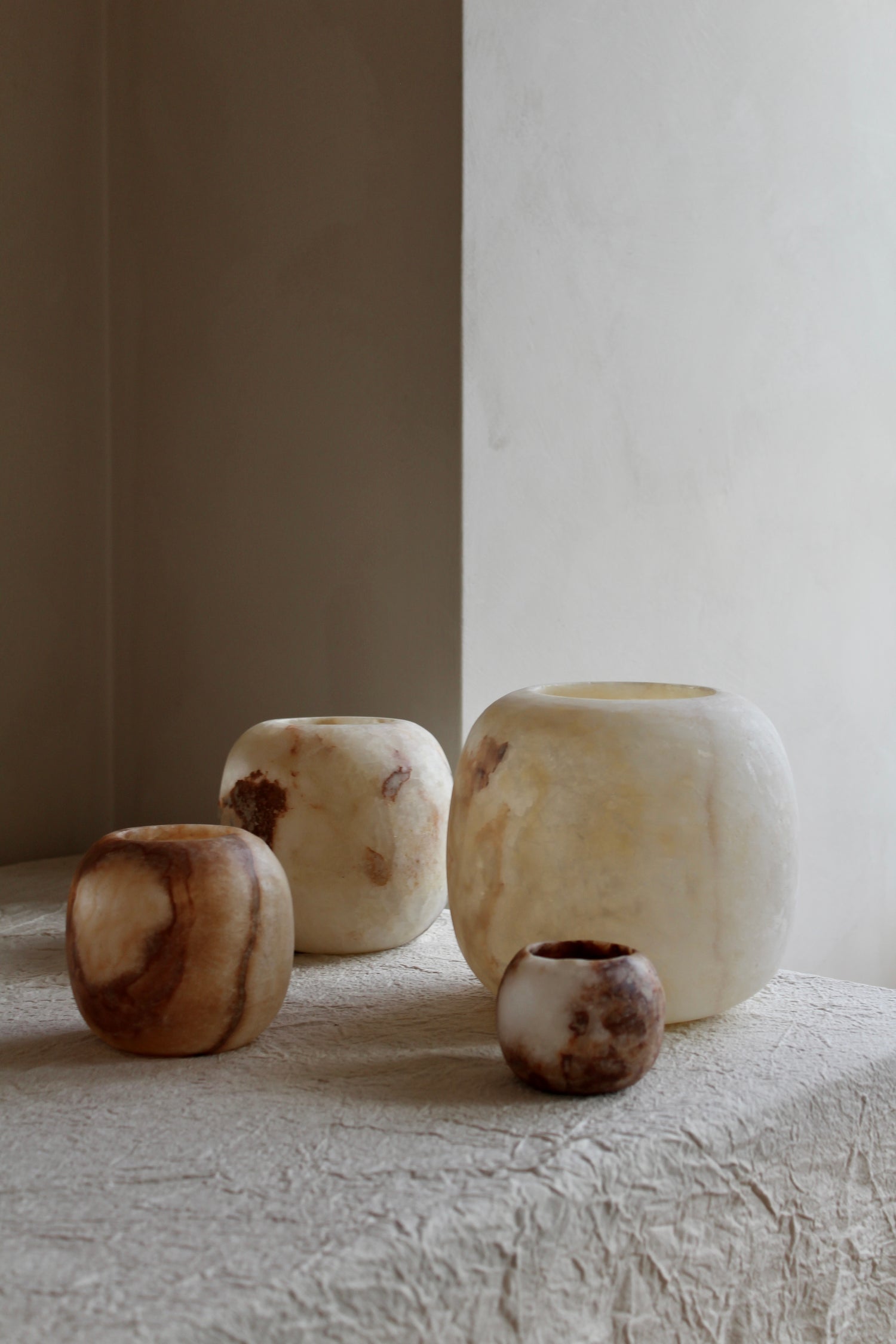
The Renaissance of Alabaster: Protecting and Celebrating the Beautiful Mineral
Alabaster is one of the most unique materials in the world, with a combination of properties that make it difficult to classify as either stone or glass. With its natural, mysterious beauty, it has been used for centuries to create stunning works of art. But what exactly is alabaster, how is it used, and how can it be incorporated into your home decor? Let's take a closer look.
(Picture: Alabaster Tealight)

What is Alabaster?
At first glance, alabaster looks like stone. But upon closer inspection, you can see its diffuse structure that gives it a unique appearance. Chemically speaking, alabaster is calcium sulfate that forms through a process of evaporation and pressure. It is created when water from salt lakes evaporates, leaving behind a crust that is then exposed to mechanical influences that deform and color the mineral mixture before it solidifies.
The material eventually condenses into egg-shaped blocks known as "eggs." These eggs can vary greatly in size, depending on the location, and can be as small as a potato or as long as three meters. The weight of an alabaster egg can range from a few grams to several hundred kilograms.
(Picture: Alabaster Tealight Amber)

The History of Alabaster
Alabaster has been used for centuries to create decorative objects and works of art. The earliest known source of the material is Egypt, where it was used to create translucent lanterns decorated with engraved or raised figures that came to life when lit. Alabaster was also used in ancient Greece to finish fire bowls and as wall cladding and window seals.
During the Middle Ages, alabaster was used in churches for its fine veining, but its lack of moisture resistance meant it could only be used indoors. Its popularity waned as it came to be seen as a cheap substitute for marble, and it was used mainly for making imitation pearls. It wasn't until the 19th century that alabaster experienced a resurgence in popularity for art objects, which lasted until the early 20th century.
In the decades that followed, the demand for alabaster fluctuated greatly. It enjoyed a resurgence during the Art Deco era, followed by a decline during the Great Depression and World War II. In the immediate post-war period, it became a sought-after export material, primarily for souvenirs.
(Picture: Alabaster Tealight Amber)
Alabaster Today
Today, both the raw materials and the finished works of art made from alabaster are highly valued and protected. The creation of the company Euralabastri brought about a quality seal that distinguishes high-quality craftsmanship from inferior products. In addition, a museum has been opened in Volterra, Italy, the main mining area for alabaster, that documents the history of the material.
At the same time, the only university in the world for alabaster art has been revived. Here, students learn to carefully work with the raw material and create unique designs that help bring alabaster back into the spotlight. As a result, alabaster is once again gaining popularity as a material for home decor and artistic creations.
What is alabaster used for?
Calcium sulfate has a glassy, silky matte finish and can be hardly translucent, but also almost completely translucent. The color range of the material is very broad. It can be yellow-brown, but also more pink or gray. The most common, beautiful, and popular shade of alabaster is white, with nuances ranging from radiant to creamy.
Compared to other natural resources, the material is very soft. When cut, it has a unique smoothing property similar to wood. This made it a popular material for artworks, jewelry, and other decorative objects.
The benefits of alabaster
The material maintains its basic aesthetic in any form. The paper structure makes the surface light, and the translucent effect suggests openness. The matte sheen of alabaster creates a warm feeling. Last but not least, the monotonous color of the natural material exudes calmness. These are all factors that create a pleasant contrast to the hard reality of daily life. With an alabaster item, you can add a beautiful counterpoint to the hustle and bustle. These effects are also emphasized by gemology. For example, alabaster amulets are said to have a positive effect on the psyche and support inner peace.
View Alabasters
-
 Sold out
Sold outAlabaster Tealight Amber
Available in multiple variantsRegular price From €29,00 EURRegular priceUnit price / per€170,00 EURSale price From €29,00 EURSold out -
 Sold out
Sold outAlabaster Tealight
Available in multiple variantsRegular price From €29,00 EURRegular priceUnit price / per -
 Sold out
Sold outAlabaster Tealight White Teardrop
Available in multiple variantsRegular price From €55,00 EURRegular priceUnit price / per -
 Sold out
Sold outAlabaster Tealight Cylinder
Available in multiple variantsRegular price From €59,00 EURRegular priceUnit price / per





